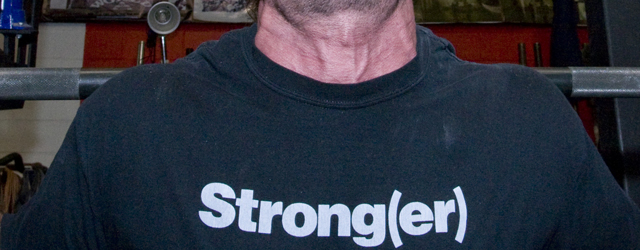
Key Performance Indicators
Measuring Progress Correctly
If you want to go to college to become an engineer, does it really matter what grade you got in freshman Spanish class? Not all that much. Your grades in mathematics and physics are much more important in the long run. Key performance indicators are specific, measurable things that tell us whether or not we are making progress toward our goals. In the example above, math and physics are your key performance indicators. If both of those grades go up, but your Spanish grade stays the same or drops, you’re still making progress toward becoming an engineer. Your Spanish grade isn’t a key performance indicator (KPI).
KPIs
An easy way to relate the same concept to training is to use powerlifting as an example. Your bench, squat, and deadlift are the three lifts that matter most, and your only goal is to make those numbers go up. Dave Tate and others have talked ad nauseam about figuring out which supplemental exercises have the best carryover to the big three and how to use those exercises as your indicators. For example, if you find that every time your floor press increases, your bench does as well, you know that floor pressing is one of your KPIs. That means it is far more important to bring up your floor press than it is to worry about upping the weight on something like a triceps press-down. For the deadlift, you might find your KPIs to be dumbbell rows or pull-ups. No two people are the same and what works for one person might not work for you. It takes some time and thought to figure out your own KPIs, but it's well worth it in the long run. 
Specific Goals
Here’s a slightly different example of why it’s important to understand KPIs as they relate to your specific goals. Most clients I see who aren't still competitive athletes share a similar goal— they want to improve their body composition. After all, most people just want to look good naked. In their eyes though, the goal is weight loss. That’s where most people miss the boat. Fat loss isn't the same as weight loss. If you tell someone they can look like Brad Pitt in Fight Club but still weigh exactly what they do today, 99 times out of 100, they’ll be OK with that. For some reason though, even when people look better, feel better, and fit into clothes they haven’t worn in months, they still freak out when that little digital number glaring back at them doesn’t keep dropping.
The Scale
The scale is not a KPI. In fact, it might be one of the worst inventions ever. What we try to reinforce is that other biofeedback markers such as thirst, appetite, urination, sleep, and energy levels are much more important overall. They are the real KPIs.  Obviously, sports where weight plays an important role (i.e. wrestling, powerlifting, boxing) are the exception to this rule. For everyone not concerned with their weight class though, figure out what the KPIs are for your specific goals and only worry about measuring those things. The principle of key performance indicators applies to training the same way it does to business and your personal life. There are KPIs for everything. Find them and use them! And for the love of God, stay off the freaking scale.
Obviously, sports where weight plays an important role (i.e. wrestling, powerlifting, boxing) are the exception to this rule. For everyone not concerned with their weight class though, figure out what the KPIs are for your specific goals and only worry about measuring those things. The principle of key performance indicators applies to training the same way it does to business and your personal life. There are KPIs for everything. Find them and use them! And for the love of God, stay off the freaking scale.








